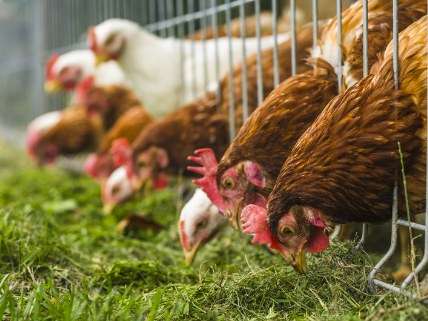Election Focus on Food Policy Is Lacking
As the presidential race drags into the home stretch, food issues don't even rate as a blip on the polls.


As the presidential race drags into the home stretch, food law and policy issues—to my dismay—are polling about as well as is Gary Johnson.
Why don't these issues loom larger? I think three key factors are in play.
First, polls show most voters don't care much about food and agricultural issues. A Pew poll taken over the summer found that voters didn't identify food and agricultural issues as one of their top priorities in this election.
Second, donations from the food sector to presidential candidates sometimes lag compared to other sectors. That's not to say that the agricultural sector doesn't support candidates. They just appear more likely to pump money into state races. For example, a recent Associated Press investigation found that the sugar industry in Florida donated nearly $60 million to state and local political campaigns between 1994 and 2016.
Third, points one and two appear to have been reflected in the words of the candidates themselves—or, rather, in the lack thereof—about food and agricultural issues during the election.
Still, none of this is to say that money from agricultural interests hasn't made its way into the presidential election. Last month, Mother Jones columnist Tom Philpott published an interesting piece on agricultural-sector donations to Hillary Clinton and Donald Trump. Philpott, using data from the Center for Responsive Politics (CRP), notes that Clinton leads Trump by a roughly 2-1 margin in donations, and refers to Clinton as "the race's chief agribusiness cash magnet."
Clinton has most definitely pulled in more donations from the agribusiness sector than has Trump. But, as I noted in an NPR Marketplace/BBC Radio interview that aired yesterday, the numbers don't shake out so much in Clinton's favor on closer inspection.
(A few words on CRP's methodology: First, CRP's sector data includes donations from large and small companies, trade unions and associations, and their employees. Second, CRP's definition of "agribusiness" is a bit squishy. Merriam-Webster defines "agribusiness" as "the business or industry of farming or agriculture[.]" Grocers—for example—don't meet that definition. Yet CRP includes them in their agribusiness sector just the same.)
The "cash magnet" remark is a bit of an overstatement. Agribusiness donations are a tiny percentage of the overall amounts raised by Clinton and Trump. Agribusiness donations to Clinton and outside groups supporting her to date total around $1.7 million. By contrast, CRP data show that plumbers unions have donated more than $2.5 million to her campaign and outside groups supporting her. And while Trump has raised $1 million in agribusiness donations, he received that same amount from one small casino in Southern California.
The recent narrative is that large organic and biotech food companies love Clinton. But so-called agribusiness doesn't really love either Clinton or Trump. For example, Whole Foods, the third biggest organic donor to Clinton, gave less than $12,000. The bigger picture is that former candidates Marco Rubio, Jeb Bush, and Mike Huckabee each raised more from so-called agribusiness interests than have Clinton and Trump. In fact, if you were to add up Clinton and Trump agribusiness donations and multiply them by two, they'd still fall nearly a million dollars short of agricultural sector donations to Marco Rubio.
Among those who are donating, what are some factors that might be influencing where they direct their dollars?
Immigration—which impacts food and agriculture—is one big issue. Trump has promised to deport many of the people who grow and cook our food (or their families, or both). This would have a tremendously negative impact on America's food production and preparation. As Politico reported earlier this year, many farmers fear that "Trump's positions jeopardize their livelihoods—and the nation's access to fresh fruit and vegetables." Forcing millions of taxpaying, experienced laborers to leave a workforce that's already struggling to fill jobs would hurt America's ability to feed itself.
Second, planning for a 2018 Farm Bill is well underway. Many large agricultural groups are terrified about the prospect of Congress forcing farm subsidies and similar programs to stand on their own (without SNAP benefits) because they know, as the American Farm Bureau Federation puts it, that if "we split nutrition and farm programs apart, we simply don't have the votes [in Congress] to pass an adequate farm bill with a good safety net." Clinton is a longstanding supporter of the Farm Bill status quo. Trump, on the other hand, is an unknown.
That unknown element extends beyond the Farm Bill to the country's general agribusiness climate. The current USDA under Secretary Tom Vilsack (who Clinton considered as her vice presidential running mate, and who's advising her on agricultural policy) has been cozy with agribusiness. And even though the beef industry has generally leaned Trump's way, as Philpott's data show, an industry insider predicted months ago that "a Hillary Clinton presidency promises essentially a continuation of the Obama administration policies relative to agriculture." That same insider suggested a Trump presidency would give rise to "some radical departures" for agricultural policy, though he wasn't quite clear what that meant.
Americans are rightly concerned about our presidential candidates. Someday soon, I hope, they'll apply that same degree of concern our many awful food and agricultural policies.




Show Comments (35)